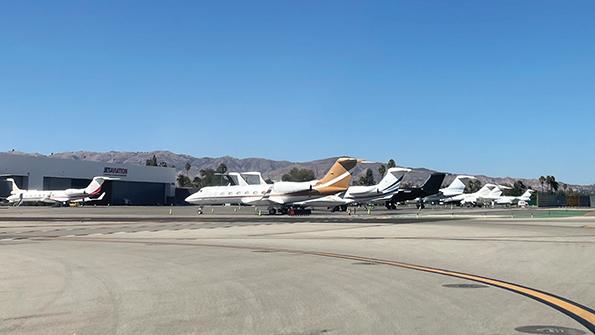
Business jet operators will face tough competition from airlines for pilots.
The airline industry’s perennial need for new pilots to meet projected future demand overshadows business aviation, which faces its own pilot shortage. This is not about the airlines though; they get plenty of spotlight already. Ironically, despite a trending reputation for being excessive, business aviation operators actually represent the “mom and pop” side of this industry compared to the power and influence of their airline counterparts. Despite its smaller size, this sector just so happens to contribute billions of dollars to the global economy along with a long list of benefits that airlines simply cannot provide.
Training provider CAE’s Airline and Business Jet Pilot Demand Outlook contains a benchmark for business aviation fleet and pilot data. The 10-year forecast, last updated in 2020, represents the most up-to-date data specific to business aviation with direct comparisons to commercial aviation.
Highlights of the CAE study include the need for about 4,000 new business aviation pilots by 2029 compared to a demand for 93,000 pilots in the airline sector. Disproportionately, the report predicts that 3,600 business jets will enter service during that period, enlarging the global fleet to 26,000 aircraft. The forecast indicates that 7,800 airliners will enter service, bringing the commercial fleet to 36,000 aircraft.
The fleet numbers allude to a constant demand for pilots in business aviation but also suggest that business aviation operators will continue competing for new pilots with airlines that have significantly more resources at their disposal.
Bob Rockmaker, president and CEO of the Allentown, Pennsylvania-based Flight School Association of North America, has monitored pilot supply and demand for decades. He says he has never before seen the incentive packages that airlines are now offering pilot candidates, especially at the regional level.
Within business aviation, the recruiting challenge posed by the airlines weighs most heavily on Part 135 commercial charter operators, which typically do not have the same appeal for a job seeker as a Part 91 corporate or private operator, Rockmaker says.
Demand for Part 135 operations has greatly increased since the onset of the COVID-19 pandemic, when travelers avoided flying on airlines. But flying on-demand, typically for two weeks at a time, is a lifestyle that catches up to pilots quickly. The expectation that they may also have to act as aircraft cleaners, customer service representatives and the overall face of the operation can drive pilot candidates to a regional carrier offering higher pay without the added responsibilities.
“The Part 91 corporate flight departments, or affluent individuals looking for a personal pilot, will typically have great advantages over their competition when it comes to pilot recruitment,” Rockmaker says. “Pilots flying Part 91 operations are more likely to not only have sufficient pay, but a lifestyle that many pilots aspire to. The ability to come home at the end of a workday or stay somewhere luxurious for days at a time without trips in between is a huge value. It’s Part 135 charter operators that will really need to market themselves to the workforce,” he adds.
Business aviation operators have one significant advantage over airlines—the ability to bring a “mom and pop” personal touch to their employees.
“The beauty of business aviation is it can be unique and individual,” says Jo Damato, National Business Aviation Association senior vice president for education, training and workforce development. “Part 91 or 135 operations, large or small, may not be for everyone. But for those who want more engagement beyond the flight deck, and who want to work their way up in an organization beyond being just a number, they can likely cater to that person’s goals. Certain things will appeal differently to different people, and that’s what we try and highlight in order to attract, retain and develop business aviation professionals.”
Charter operator Wheels Up offers an example of how business aviation has become creative in recruiting new pilots. The company helps build its pilot corps by hiring retired airline pilots after their mandatory Part 121 retirement age of 65.



